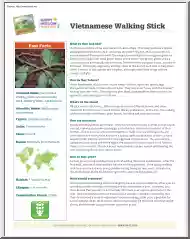Nincs még értékelés. Legyél Te az első!
Mit olvastak a többiek, ha ezzel végeztek?
Tartalmi kivonat
Guide to Sailing at MIT This document contains important information for your continued enjoyment while sailing at MIT, so please take the time to read it in its entirety. The information below includes things that we expect our sailors to understand to keep sailing a safe, productive and fun pursuit. There are helpful links included throughout for you to check out; of particular interest is the MIT Sailing Booklet, which is a great resource created just for you. This abbreviated guide supplements the in-person instruction given to prospective MIT sailors. The intent of this guide is to ensure that both new and experienced sailors have a reference for useful sailing tips and safety info, all in one place. This email will include: MIT Sailing guest policy An explanation of the MIT Sailing Pavilion rating system A precautions and safety Q&A that we expect our proficient sailors to understand Rules of the road – an intro to right of way rules specific to sailing Additional
information and resources for you to check out! MIT Sailing access - updated as of June 27th, 2022 We are excited to offer sailing to the MIT community via a sailing card to anyone with DAPER athletic facility access (which includes all students)! Use the MIT sailing website to view our recreational sailing hours, which are also posted on our doors. Non-student participants must obtain a 6 month or 12 month DAPER membership before receiving a sailing card. Pricing and information can be found at this MIT Recreation page. Guest policy: Non-MIT guests are permitted to be in boats as long as: 1) They know how to swim and, 2) Are escorted by an MIT Sailing cardholder in the boat with them Keep in mind the capacity of each boat. Tech Dinghies can fit up to three people total and the Lynx Catboat fits up to eight people total. The MIT Sailing Pavilion Rating System The MIT Sailing Pavilion rating system allows dockstaff and instructors to assess the skill level of MIT sailors and assist
in a fashion that is suitable to individual needs. The rating of a sailor may be considered during any of the following: reefing requirements for the given conditions, independence while rigging/de-rigging, rescue needs/self-rescue abilities and access to advanced boats/classes. All sailors new to MIT sailing begin with the basic Swim rating. Once you are comfortable single-handing a Tech Dinghy, consider getting your Provisional rating, which will give you access to more classes, more boats and less reefing requirements. Talk to a dockstaff in person if you feel ready to begin your Provisional Check-List. The next section below contains the answers to the question-based portion of the check-list. Check out this page for more information about the MIT Sailing rating system. Precautions and Safety No trick questions here; this basic information will help ensure a level of independence and safety for your sailing sessions. These questions are also part of getting your Provisional rating
when you have more sailing experience! This page has a detailed list of things to keep in mind to ensure you have a safe sail! 1) Restricted sailing areas of the Charles River Basin Sailors must stay away from the neighboring yacht club as much as reasonably possible. Boats must remain between the two bridges surrounding the basin (Longfellow to the East and Harvard Bridge to the West). Boats may only land at the MIT Sailing dock Steer clear of the shallow Boston riverside. 2) Maximum number of people in boats The maximum occupants for the Techs is three people. For the Lynx Catboat, the skipper (with a sailing card) may bring up to seven guests for a total of eight people. Lasers are limited to single-handing, and other dinghies (FJs, 420s) are limited to two people. 3) Procedure after capsize Remember that capsizing dinghies is a normal part of sailing and is a fairly common occurrence. Chat with a dockstaff if you’re interested in learning more Capsizing while single-handed:
o Get into the water, but keep your hands on the boat* (see note below). o Move around the back of the boat/stern to get to the centerboard. o Grab onto the end of the centerboard with both hands and begin pulling down. As the centerboard lowers and the mast lifts out of the water, get your upper body onto the centerboard for more leverage. o Grab a hold of the upper edge of the boat when it is in reach, and haul yourself in over the stern or side of the boat. Capsizing while double-handed: Visit this Scoop Method Capsize Recovery page for an illustrated description. Important takeaways are to get into the water*, stay with your boat, ask the other person if they are okay, and pull people back into the boat using the shoulder straps on their PFD. *To prevent turtle-ing (mast pointing to bottom of the river) drop into the water to avoid pulling the high side of the boat into the water after the boat has already capsized. Doing so will pull the boat completely upside down. Accept your
fate and get in the water, resistance is futile If your boat turtles, climb on top of the hull and use the centerboard (if it is still deployed) to right your boat. 4) Explain MIT Sailing Pavilion recall signals If, for any reason, the dockstaff need all sailors off the water, please look out for the following signals to quickly return to the dock. Many of these signals occur during closing times and ahead of an approaching storm. 1) Flag is lowered 2) Lights on the side of the building will be turned on. 3) If you see lightning or hear thunder 4) If you see that it is near closing time or that the sun is about to set. 5) Number of lifejackets required per boat Number of lifejackets = number of people onboard. Thats it:) Remember, while sailing at MIT, wearing your lifejacket properly is required when on the water. Buckle up! Remember to grab a helmet if you are taking out a dinghy. 6) When to adjust your centerboard Here are two situations that could be improved by adjusting your
centerboard. Keeping your boat from heeling (tipping) excessively during heavy air days - If you find yourself with too much sail area and too much wind, you may find that it is difficult to keep your boat flat when traveling upwind with the centerboard all the way down. Raising your board up partially during strong winds will transfer some of the winds force away from heeling your boat over and instead your boat will slide sideways a bit. This is desirable if you want to compensate upwind travel for reduced risk of capsizing. Increasing speed while sailing downwind, especially for racing purposes - the centerboard foil prevents the boat from sliding sideways when traveling against the wind (upwind). In the case of traveling with the wind (running downwind), it provides additional stability but isnt necessary to maintain direction of travel. Raising your centerboard up, either partially or fully, will reduce surface area and therefore friction against the water. This is desirable if
your goal is to increase your speed Remember to put your centerboard down if you want to turn! Sailing Right of Way Rules *Avoid all collisions when possible Taking early and substantial action to avoid other boats is far more preferable than making a last-second decision in close-quarters. Sailboats will remain clear of kayaks, canoes, rowing shells, vessels engaged in fishing, vessels not under command and vessels with limited maneuverability. Different tacks: A port tack boat must give way to a starboard tack boat - If two sailboats are approaching each other and the wind is on a different side of each boat, then the sailboat which has the wind hitting the port side first must always give right of way to the other. (The port side is the left-hand side of the boat when you are facing the bow) Same Tack: Windward boat must give way to the leeward boat - If two sailboats are approaching each other and the wind is on the same side of each boat, then the vessel which is to
windward (towards the direction of the wind) must give the right of way to the vessel which is leeward (furthest from the wind). Overtaking: An overtaking boat must give way to the boat being overtaken. Additional information and resources Please familiarize yourself with any terms that you do not recognize. It will be particularly important for you to understand port vs starboard, windward vs. leeward, tack, jibe and points of sail .The MIT Sailing Booklet is a helpful guide to many things required for the provisional rating; of particular interest is the figure for man-overboard on page 17. Knots: You will want to practice and have these five down - bowline (to tie the boat to the dock), figure 8 (stopper knot for sheets), cleat hitch (fastening halyards off), clove hitch (general fastening), and stunsail tack bend (used to attach the Tech halyard to mainsail). Here you can find videos on rigging/reefing, knots and sailing maneuvers. We hope that you’ll enjoy your MIT
sailing experience! As always, feel free to reach out anytime. See you on the docks, Hannah, Eric and the Volunteer/Dockstaff LTS team
information and resources for you to check out! MIT Sailing access - updated as of June 27th, 2022 We are excited to offer sailing to the MIT community via a sailing card to anyone with DAPER athletic facility access (which includes all students)! Use the MIT sailing website to view our recreational sailing hours, which are also posted on our doors. Non-student participants must obtain a 6 month or 12 month DAPER membership before receiving a sailing card. Pricing and information can be found at this MIT Recreation page. Guest policy: Non-MIT guests are permitted to be in boats as long as: 1) They know how to swim and, 2) Are escorted by an MIT Sailing cardholder in the boat with them Keep in mind the capacity of each boat. Tech Dinghies can fit up to three people total and the Lynx Catboat fits up to eight people total. The MIT Sailing Pavilion Rating System The MIT Sailing Pavilion rating system allows dockstaff and instructors to assess the skill level of MIT sailors and assist
in a fashion that is suitable to individual needs. The rating of a sailor may be considered during any of the following: reefing requirements for the given conditions, independence while rigging/de-rigging, rescue needs/self-rescue abilities and access to advanced boats/classes. All sailors new to MIT sailing begin with the basic Swim rating. Once you are comfortable single-handing a Tech Dinghy, consider getting your Provisional rating, which will give you access to more classes, more boats and less reefing requirements. Talk to a dockstaff in person if you feel ready to begin your Provisional Check-List. The next section below contains the answers to the question-based portion of the check-list. Check out this page for more information about the MIT Sailing rating system. Precautions and Safety No trick questions here; this basic information will help ensure a level of independence and safety for your sailing sessions. These questions are also part of getting your Provisional rating
when you have more sailing experience! This page has a detailed list of things to keep in mind to ensure you have a safe sail! 1) Restricted sailing areas of the Charles River Basin Sailors must stay away from the neighboring yacht club as much as reasonably possible. Boats must remain between the two bridges surrounding the basin (Longfellow to the East and Harvard Bridge to the West). Boats may only land at the MIT Sailing dock Steer clear of the shallow Boston riverside. 2) Maximum number of people in boats The maximum occupants for the Techs is three people. For the Lynx Catboat, the skipper (with a sailing card) may bring up to seven guests for a total of eight people. Lasers are limited to single-handing, and other dinghies (FJs, 420s) are limited to two people. 3) Procedure after capsize Remember that capsizing dinghies is a normal part of sailing and is a fairly common occurrence. Chat with a dockstaff if you’re interested in learning more Capsizing while single-handed:
o Get into the water, but keep your hands on the boat* (see note below). o Move around the back of the boat/stern to get to the centerboard. o Grab onto the end of the centerboard with both hands and begin pulling down. As the centerboard lowers and the mast lifts out of the water, get your upper body onto the centerboard for more leverage. o Grab a hold of the upper edge of the boat when it is in reach, and haul yourself in over the stern or side of the boat. Capsizing while double-handed: Visit this Scoop Method Capsize Recovery page for an illustrated description. Important takeaways are to get into the water*, stay with your boat, ask the other person if they are okay, and pull people back into the boat using the shoulder straps on their PFD. *To prevent turtle-ing (mast pointing to bottom of the river) drop into the water to avoid pulling the high side of the boat into the water after the boat has already capsized. Doing so will pull the boat completely upside down. Accept your
fate and get in the water, resistance is futile If your boat turtles, climb on top of the hull and use the centerboard (if it is still deployed) to right your boat. 4) Explain MIT Sailing Pavilion recall signals If, for any reason, the dockstaff need all sailors off the water, please look out for the following signals to quickly return to the dock. Many of these signals occur during closing times and ahead of an approaching storm. 1) Flag is lowered 2) Lights on the side of the building will be turned on. 3) If you see lightning or hear thunder 4) If you see that it is near closing time or that the sun is about to set. 5) Number of lifejackets required per boat Number of lifejackets = number of people onboard. Thats it:) Remember, while sailing at MIT, wearing your lifejacket properly is required when on the water. Buckle up! Remember to grab a helmet if you are taking out a dinghy. 6) When to adjust your centerboard Here are two situations that could be improved by adjusting your
centerboard. Keeping your boat from heeling (tipping) excessively during heavy air days - If you find yourself with too much sail area and too much wind, you may find that it is difficult to keep your boat flat when traveling upwind with the centerboard all the way down. Raising your board up partially during strong winds will transfer some of the winds force away from heeling your boat over and instead your boat will slide sideways a bit. This is desirable if you want to compensate upwind travel for reduced risk of capsizing. Increasing speed while sailing downwind, especially for racing purposes - the centerboard foil prevents the boat from sliding sideways when traveling against the wind (upwind). In the case of traveling with the wind (running downwind), it provides additional stability but isnt necessary to maintain direction of travel. Raising your centerboard up, either partially or fully, will reduce surface area and therefore friction against the water. This is desirable if
your goal is to increase your speed Remember to put your centerboard down if you want to turn! Sailing Right of Way Rules *Avoid all collisions when possible Taking early and substantial action to avoid other boats is far more preferable than making a last-second decision in close-quarters. Sailboats will remain clear of kayaks, canoes, rowing shells, vessels engaged in fishing, vessels not under command and vessels with limited maneuverability. Different tacks: A port tack boat must give way to a starboard tack boat - If two sailboats are approaching each other and the wind is on a different side of each boat, then the sailboat which has the wind hitting the port side first must always give right of way to the other. (The port side is the left-hand side of the boat when you are facing the bow) Same Tack: Windward boat must give way to the leeward boat - If two sailboats are approaching each other and the wind is on the same side of each boat, then the vessel which is to
windward (towards the direction of the wind) must give the right of way to the vessel which is leeward (furthest from the wind). Overtaking: An overtaking boat must give way to the boat being overtaken. Additional information and resources Please familiarize yourself with any terms that you do not recognize. It will be particularly important for you to understand port vs starboard, windward vs. leeward, tack, jibe and points of sail .The MIT Sailing Booklet is a helpful guide to many things required for the provisional rating; of particular interest is the figure for man-overboard on page 17. Knots: You will want to practice and have these five down - bowline (to tie the boat to the dock), figure 8 (stopper knot for sheets), cleat hitch (fastening halyards off), clove hitch (general fastening), and stunsail tack bend (used to attach the Tech halyard to mainsail). Here you can find videos on rigging/reefing, knots and sailing maneuvers. We hope that you’ll enjoy your MIT
sailing experience! As always, feel free to reach out anytime. See you on the docks, Hannah, Eric and the Volunteer/Dockstaff LTS team



